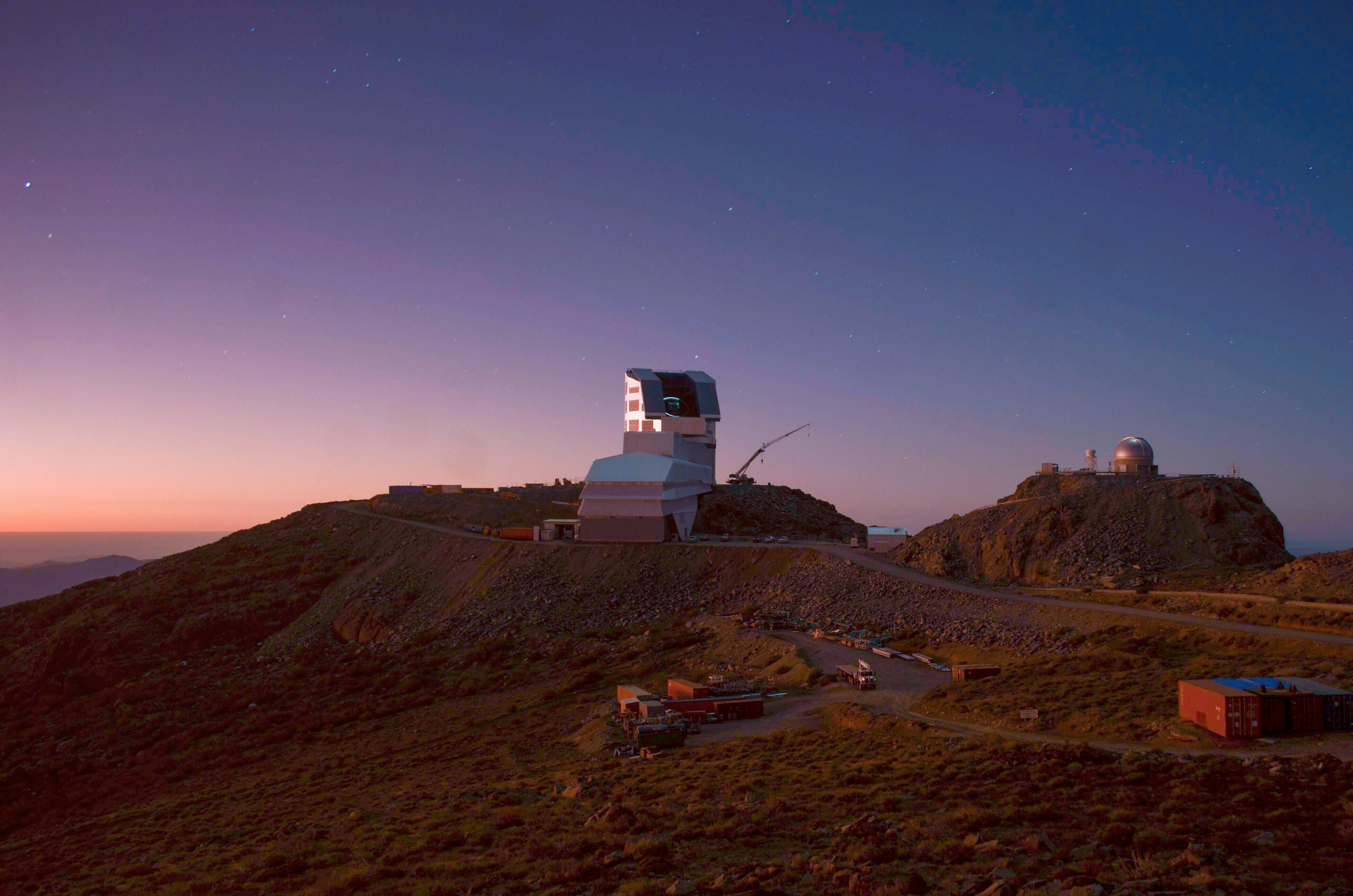Vera C. Rubin Observatory
Our free public visits to our sites are now open.
The mission of the Vera C. Rubin Observatory construction project is to build a well-understood system that will produce an unprecedented astronomical data set for studies of the deep and dynamic Universe, make the data widely accessible to a diverse community of scientists, and engage the public to explore the Universe with us.
For updates on the construction and science operations, check the Project & Science News page.
Overview
Vera C. Rubin Observatory, currently under construction in Chile, will conduct an unprecedented, decade-long survey of the optical sky called the Legacy Survey of Space and Time (LSST). Once Rubin Observatory begins operations it will revolutionize the field of astronomy and what we know about the Universe.
Rubin Observatory is a complex, integrated system consisting of an 8.4-meter telescope, a 3200-megapixel camera, an automated data processing system, and a public engagement platform. Rubin Observatory seeks to enable science in four main areas:
- The nature of dark matter, and understanding dark energy
- Cataloging the Solar System
- Exploring the changing sky
- Milky Way structure and formation
Rubin Observatory was the top-ranked large ground-based project in the 2010 Astrophysics Decadal Survey. First Light is anticipated in 2024.
Information about Data Preview 0: Definition and planning can be found in this document.
To participate in scientific discussion about Rubin, visit the Rubin Community Forum
Telescope
The 8.4-meter Simonyi Survey Telescope features a unique three-mirror design, which creates an exceptionally wide field of view. The telescope will operate on an automated cadence, surveying the entire visible sky every few nights. The telescope is located on the Cerro Pachón ridge in north-central Chile, approximately 100 km (60 miles) by road from the support town of La Serena, where the Rubin Observatory Base Facility is located.
The Rubin Auxiliary Telescope will provide important complementary data throughout survey operations.
Camera
The Rubin Observatory LSST Camera is the largest digital camera ever constructed for astronomy — it’s roughly the size of a small car and weighs almost 2800 kg (6200 lbs). The focal plane consists of 189 charge-coupled device (CCD) sensors arranged on 21 “rafts” for a combined 3.2 gigapixels. The camera includes an automated filter-changing system with six filters: u,g,r,i,z, and y.
Data
Dedicated computer facilities will process Rubin Observatory/LSST data in real time, issuing worldwide, public alerts within 60 seconds of detected changes in the sky. Rubin Observatory will generate approximately 20 terabytes of data per night, and over its ten-year survey will produce a 15-petabyte catalog database. Through annual data releases, Rubin Observatory’s science-ready data products will be made available, with no proprietary period, to the scientific community at U.S. and Chilean institutions and named international members with in-kind contribution agreements. After two years, prior annual release data sets will be made public worldwide.
Scientists will access data through the Rubin Observatory Science Platform (RSP), a set of integrated web applications and services deployed at the Rubin Data Access Centers (DACs).
Public Engagement
A subset of data will be widely available through Rubin Observatory’s Education and Public Outreach (EPO) dynamic website, which offers tools and activities for formal educators, citizen scientists, informal science centers, and the general public to engage, explore, and discover.
Updated on November 24, 2023, 5:29 am
